By Austin Knudsen
One of the groups of people that I had the good fortune of meeting at SHOT via my good friend E.J. Redding was the folks at Primary Weapons Systems (PWS). E.J. has been shooting PWS rifles in 3-gun matches for a few years now, and I’ve handled a few of their products whilst smoking cigars in E.J.’s workshop over the years. PWS is located in Parma, Idaho, and they manufacture high-end AR-platform firearms in various calibers (not to mention their wicked-cool Summit T-bolt .22 rifle) . . .
PWS is predominately known for their long stroke piston-operated AR rifles, which basically incorporate the AK-47 style, ultra-reliable long stroke piston system into the AR platform. For those who aren’t familiar with the difference between a piston-operated AR and a traditional direct impingement (DI) AR, let me briefly explain.
The original AR design and 99% of the ARs marketed today are DI guns, meaning gas is bled off the barrel upon firing via the gas block, that gas is directed back to the bolt carrier via the gas tube, and this direct application of gas operates the bolt and cycles the action each time upon firing. The piston system, on the other hand, basically places a metal piston between the gas block and the bolt carrier. Thus, the gas bled off the barrel by the gas block operates the piston, which in turn operates the bolt.
Piston guns run cleaner and generally need cleaned less often than DI guns, as piston guns don’t dump gas (and associated carbon/filth) directly into your rifle action like DI guns do. While there are other manufacturers who build piston-operated AR rifles, all other piston gun manufacturers use a variation of the short-stroke piston systems. PWS claims their long-stroke system is more reliable, uses fewer parts, and eliminates bolt carrier tilt and wear associated with short-stroke piston systems.

After spending some time at the PWS SHOT Show booth, followed by supper and a late night of Las Vegas fun with PWS owner Dean Sylvester, western region sales director Andrew Pike, and research and development director Becca Pike, I decided that I needed to own a PWS rifle.
My plan was to purchase a new PWS rifle, chambered in .223. So I began socking away spare change and raiding the couch cushions to build the rifle fund, as PWS rifles cost a little more than a Wal-Mart AR. Then I got a phone call from E.J. He had a slightly used PWS Mk 216 (.308/7.62×51 caliber, 16 inch barrel) Mod 0 (1st engineering run) PWS had built for him that he wanted to sell to me so he could fund a new PWS Mk 220 (.308/7.62×51 caliber, 20 inch barrel) Mod 1 (2nd engineering run). I had fondled his Mod 0 rifle before; it had been well cared-for in E.J.’s hands and he had installed a flat-bow Giesele trigger, so a deal was struck and I bought the rifle from him.
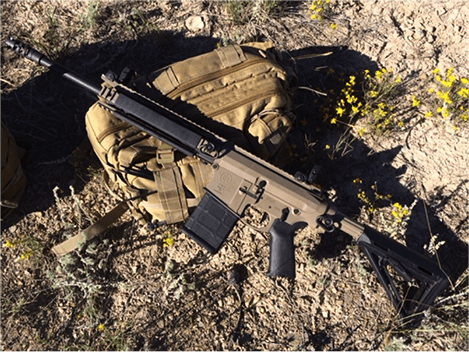
In turn, E.J. bought the new 20” barrel rifle from PWS.

In the course of work and raising kids, I hadn’t had a chance to shoot my newly-acquired rifle in the few months I’d owned it, and had only just recently installed some MagPul backup sights on it.
Last fall I travelled to Helena, Montana for my other day job, and happened to take my PWS rifle with me. One evening I found myself in E.J.’s workshop, and after a few whiskeys, we decided that we needed to do a head-to-head test of these two PWS .308s. After a few more whiskeys, we came up with the plan: each rifle would be fired from a bench at 100 yards. A large cross section of factory ammunition would be tested for accuracy from each rifle, using 5-shot groups for each load. Each shot would be chronographed, and the average speed of each 5-shot string would be reported. We would use one scope and mount on both rifles, to eliminate any variance in optics.
The next day, we placed a phone call to Ross Morgan who manages a ranch outside of Helena where E.J. does much of his shooting. Ross agreed to let us use his 100 yard rifle range, and wanted to be involved in our testing if he could get away from the hay field. Many thanks and a shout-out to our great host Ross.
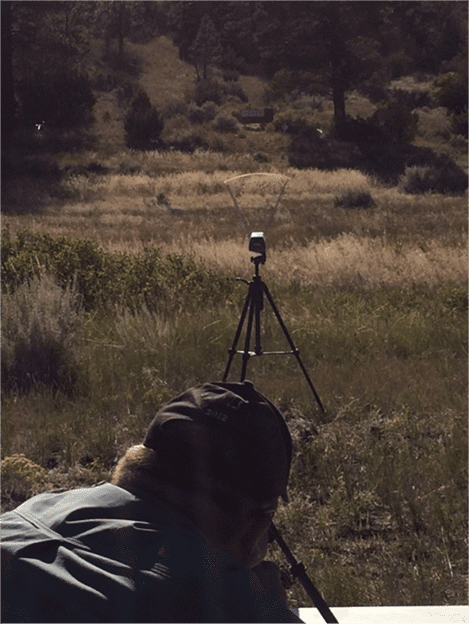
For our testing, we used 9 factory loads:
- Lake City M118LR 7.62x51mm
- Federal Gold Medal Match .308 Winchester 175 grain Sierra Match King
- Federal Gold Medal Match .308 Winchester 168 grain Sierra Match King
- Federal Gold Medal Match 7.62x51mm 175 grain Sierra Match King
- Nosler Custom Competition .308 Winchester 168 grain boat tail hollow point
- HSM 165 grain soft point
- Federal Premium .308 Winchester 150 grain Nosler Ballistic Tip
- American Eagle .308 Winchester 150 Grain FMJ
- Winchester White Box 7.62x51mm Winchester 147 grain ball
At this point, we should probably discuss some of the differences between the Mod 0 rifle and the Mod 1 rifle. The first, most obvious difference between these two particular rifles is the barrel length; my Mod 0 has a 16-inch barrel, while E.J.’s Mod 1 has a 20-inch barrel. The 20-inch barrel is the longest barrel offered by PWS, which also offers 12, 14, and 16 inch barrels in their 7.62 rifles. Here’s a picture of the two rifles side by side, showing the barrel length difference:

Aside from the different barrel lengths, there are a few significant engineering differences between the earlier Mod O rifle and the newer Mod 1 rifle. Probably the most significant change is the Mod 1’s addition of an adjustable gas block, allowing users to adjust the amount of gas directed back at the piston and the action, depending on situation. This is a feature PWS did not offer on the Mod 0, and is especially useful if using a suppressor with the rifle.
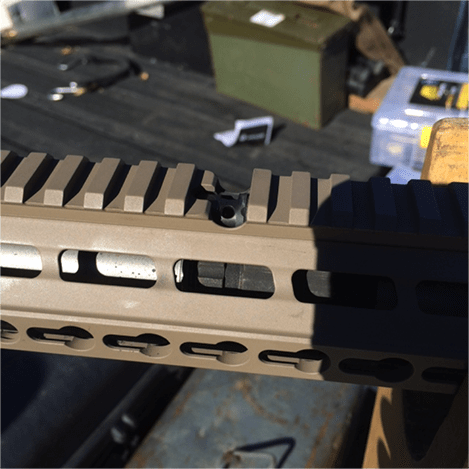
The other big change from the Mod 0 to the Mod 1 is the switch from the Mod 0’s four-sided 1913 rail hand guard to the Mod 1’s hand guard featuring 1913 rail on top and the KeyMod system on the bottom and both sides. This system allows for a variety of accessories to be easily attached, and does make for a “cleaner” rifle to my eye. It’s also easier on the hands. I solved the problem of my Mod 0’s four-sided 1913 rail chewing up my delicate lawyer hands by purchasing some rubber 1913 rail covers, which make for a much comfier handhold.
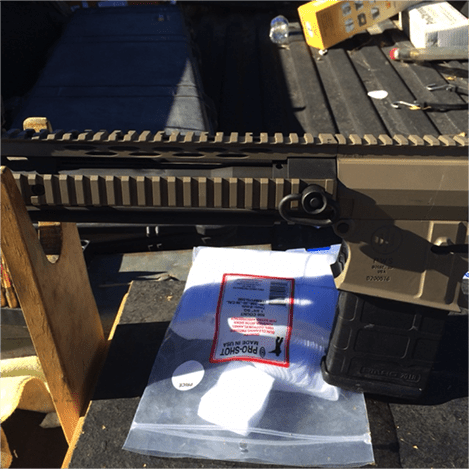
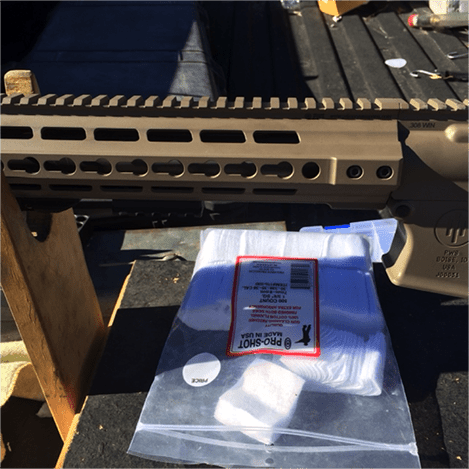
Now that we’ve discussed the details of these rifles, let’s get down to nut cutting. How did they shoot? The weather was perfect with almost no wind, which allowed us to settle down and really see what these PWS .308s could do off the sandbags. As stated above, we used the same scope and mount for both rifles, in an effort to eliminate variation: a Leupold VX-III 6.5-20 power 50mm scope, in a Warne one-piece mount.
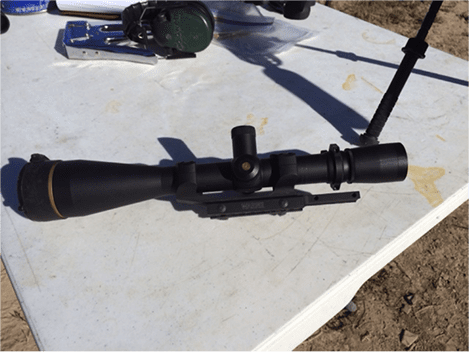
We started with my Mk 216 Mod 0. As stated above, we fired 9 factory loads through this rifle, in 5 shot groups for each load, and chronographed each string of fire. We’ll go from best to worst, giving the group size and the 5-shot average velocity for each load.
- Federal Premium .308 Winchester, 150 grain Nosler Ballistic Tip. This load produced a very respectable sub-inch group of 0.952 inches. Average speed for the load: 2662 fps.
- Nosler Custom Competition .308 Winchester, 168 grain match boattail hollowpoint. This load put up a 1.234 inch 5-shot group, with an average velocity of 2563 fps.
- Federal Gold Medal Match .308 Winchester, 175 grain Sierra MatchKing boattail hollowpoint. This load produced a 1.347 inch group, and an average velocity of 2465 fps.
- HSM .308 Winchester, 165 grain soft point. This load produced a 5-shot 1.607 inch group. As you can see in the photo above, this load was producing an absolutely stellar 4 shot group, which measured under half an inch. The fifth shot was a flier and opened the group up. This economical load definitely has potential in this rifle. Average speed was 2465 fps.
- Federal Gold Medal Match .308 Winchester, 168 grain Sierra MatchKing boattail hollowpoint. This load produced a 1.836 inch group, with some noted horizontal stringing. Average speed: 2477 fps.
- Federal Gold Medal Match 7.62x51mm, 175 grain Sierra MatchKing boattail hollowpoint. This load produced a 1.961 inch group, with an average speed of 2545 fps.
- Lake City M118LR, 175 grain boattail hollowpoint. This load produced a disappointing 2.244 inch group, with an average velocity of 2518 fps.
- American Eagle .308 Winchester, 150 grain full metal jacket. Another disappointing load, this one produced a 3.385 inch group, with an average velocity of 2647 fps.
- Bringing up the rear (the waaaaay rear), Winchester White Box 7.62x51mm 147 grain full metal jacket. This stinker did not shoot to point of aim like the other loads, and we didn’t even bother measuring the group size once we saw it had put two shots so far to the right they were off the paper. This load is cannon fodder in this rifle. Average velocity: 2673 fps.
We then moved on to shooting the newer Mk 220 Mod 1 rifle, using the same scope and mount, and firing the same 9 factory loads. Again, ranking from best group to worst:
- . Lake City M118LR, 175 grain boattail hollowpoint. This load produced a 1.295 inch group, with an average velocity of 2595 fps.
- HSM .308 Winchester, 165 grain soft point. This load produced a 5-shot 1.635 inch group. As with the Mod 0 rifle, this load was producing a great 4 shot group, which measured under ¾ of an inch. The fifth shot was a flier and opened the group up. Interesting this occurred in both rifles. Average speed was 2565 fps.
- Federal Gold Medal Match .308 Winchester, 175 grain Sierra MatchKing boattail hollowpoint. This load put up a 1.708 inch group, with an average velocity of 2570 fps.
- Federal Gold Medal Match 7.62x51mm, 175 grain Sierra MatchKing boattail hollowpoint. This load produced a 1.971 inch group, with an average velocity of 2617 fps.
- Federal Premium 150 grain Nosler Ballistic Tip. The Mod 0’s favorite load was nowhere close to the Mod 1’s favorite. This load produced a 2.365 inch group, and an average speed of 2762 fps.
- Nosler Custom Competition, 168 grain boattail hollowpoint. This load put up a 2.466 inch group. Average velocity: 2632 fps.
- Winchester white box 7.62x51mm, 147 grain full metal jacket. This load wins no awards out of either rifle. A 2.472 inch group, with an average speed of 2753 fps.
- Federal Gold Medal Match .308 Winchester 168 grain Sierra MatchKing boattail hollowpoint. 2.646 inch group. Another disappointing load in this rifle. Average speed: 2567 fps.
- Bringing up the back here is the American Eagle .308 Winchester 150 grain full metal jacket boattail. This load produced a 2.655 group, and an average velocity of 2753 fps.
So after shooting these two premium 7.62 AR piston rifles, what did we learn? Neither of these rifles is likely to win any 1,000 yard matches. But they aren’t supposed to.
PWS makes dead nuts reliable fighting rifles, which shoot roughly MOA, and are designed to fix the glitches that often plague DI rifles chambered in the hotter .308 caliber. Both rifles proved they are plenty accurate for professional (police or combat) work, given the right load.
In this particular case, we were able to squeeze better groups out of the 16-inch barreled Mod 0 than the 20 inch barreled Mod 1. However, the newer Mod 1 rifle seemed more consistent across all the loads, with no one load really coming out as the shining star; rather the Mod 1 seemed to shot fairly mediocre across the board, regardless of bullet weight. There were some flashes of brilliance here and there, but a flyer always seemed to wreck the makings of a good group with the newer Mod 1.
The Mod 0 showed some definite favorites, with the Federal Premium, Nosler Custom Competition, and even the cheap HSM ammo showing some great potential (although a frustrating flyer wrecked a stellar HSM group). Bullet weight didn’t seem to the deciding factor in the Mod 0’s groups, as the best group came from a 150 grain bullet, with a 168 grainer in 2nd place, and a 175 grainer in 3rd, while a 150 grain and 147 grain load brought up 8th and 9th place, respectively.
What about velocity? Did the four extra inches of barrel on the Mod 1 offer significant improvement over the Mod 0? The 20 inch Mod 1 gave us exactly 100 more feet per second from the HSM load compared to the 16 inch Mod 0; 105 fps more with the Federal Gold Medal Match .308 175 grain load, and 106 fps more in the American Eagle 150 grain load. However, with the Nosler Custom Competition 168 grain load and the Federal Premium 150 grain load, the Mod 1’s 20-inch barrel only gained it 64 fps more than the Mod 0’s 16-inch barrel. To my brain, the extra 4 inches of barrel may not be worth the extra weight to get 60-100 more feet per second.
Both rifles functioned flawlessly throughout the day of testing, with one exception. We did experience feeding malfunctions, but it was traced to one bad magazine, as the same magazine produced the same malfunction in each rifle. Using proven Magpul P-Mags, we had no further troubles throughout the day. The bad magazine, however, was a good reminder to test your mags before you take them out in the field.
In the end, I walked away impressed by the Primary Weapons Systems rifles. While I wouldn’t classify either rifle as a “tack driver,” I would absolutely not hesitate to bet my life on either of these serious fighters. I used to say that if a “SHTF” situation occurred and I could only grab one rifle out of the safe as I ran out the door, it would likely be my M1A or my Ak-47. I can honestly say now that it might be a tossup, and that I might just grab my PWS .308.
Ratings (out of five stars):
(I’ll do one cumulative rating for both PWS rifles)
Accuracy * * * 1/2
Neither rifle is going to compete with a properly built bolt action .308 long range rifle. However, the Mod 0 did deliver one sub-MOA group, and did pretty fair with a few other loads. The Mod 1 didn’t shoot as accurately as the Mod 0, but it did shoot just over MOA, which still makes it an effective fighting rifle. In the Mod 1’s defense, it was a brand new rifle, and perhaps the barrel was not properly broke in yet (if you believe in such things).
Ergonomics * * * * *
Everything is where it should be on these rifles. Both came with MagPul’s excellent adjustable length stock. My only pseudo-gripe on the Mod 0 was the 1913 rails all the way around the handguard, but this was easily cured with some $3 rail rubbers and has been permanently cured on the Mod 1 rifles.
Reliability * * * * *
The only malfunction experienced on these rifles was definitively traced to one faulty magazine. I won’t ding the rifles for that, as any magazine-fed firearm is dependent on a properly functioning magazine. Once that mag was discarded, the rifles ran like tops all day without a hiccup.
Customize this * * * * *
What’s more customizable than an AR? Don’t like the stock? Change it. Muzzle brake too loud? Change it. Trigger too creepy? Change it. Sights? You get the picture. Hell, when I got the Mod 0, I swapped out the Hogue pistol grip that E.J. had on it for a MagPul grip and added some MagPul flip-up sights, just so I could say I put my own touches on it. Top rails, bottom rails, side rails (1913 or KeyMod): you can mount any accessory, optic, or light you can think of. The permutations are infinite.
Overall * * * * 1/2
Superb craftsmanship and materials with the latest in AR innovation and ingenuity. These rifles are built by excellent Americans, which I can attest to firsthand. The Mod 0 showed what I consider very good accuracy for a semi-auto. However, the accuracy in the Mod 1, while arguably adequate, was a little disappointing. That’s why I knocked the rating down by half a star. With that said, I’m definitely keeping my PWS .308, and am seriously considering adding that PWS .223 I was originally eyeballing.



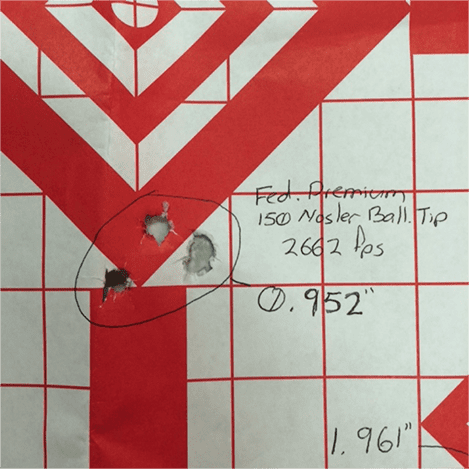
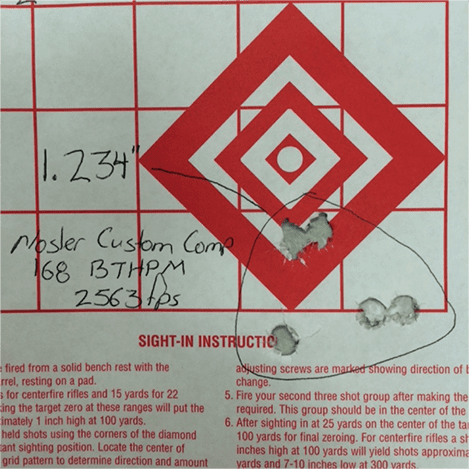
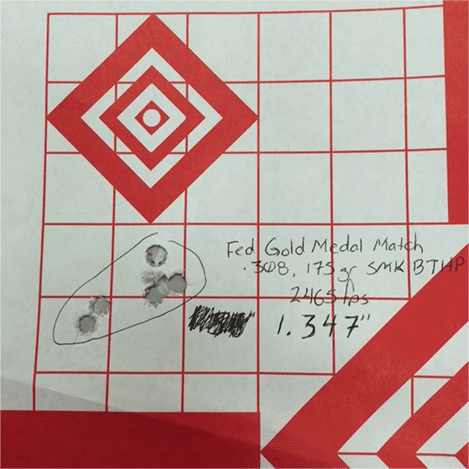
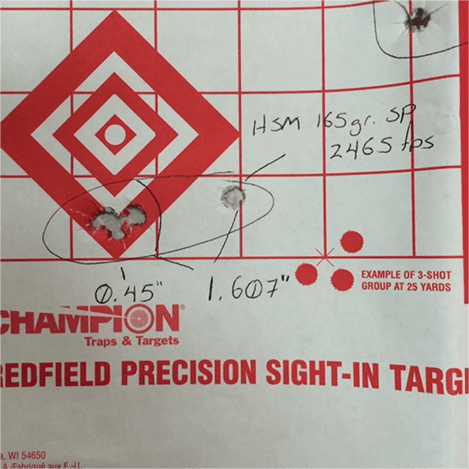

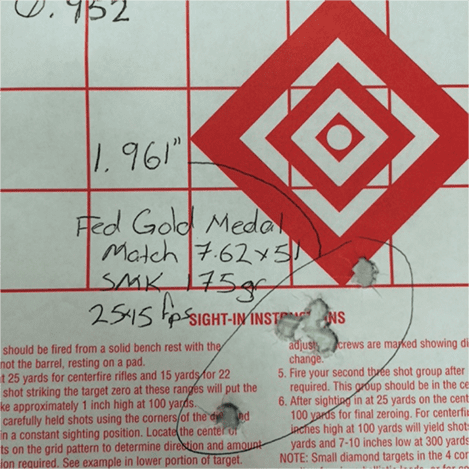
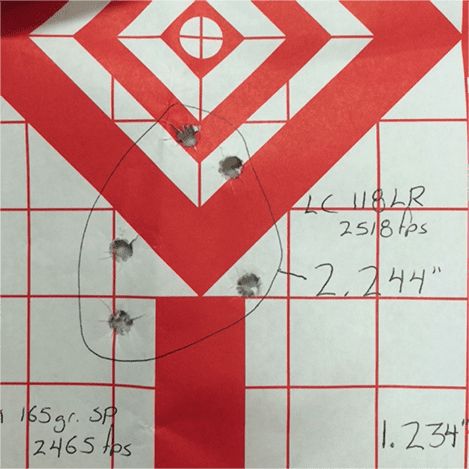
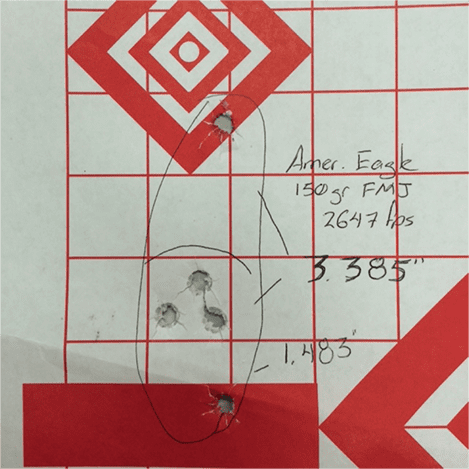
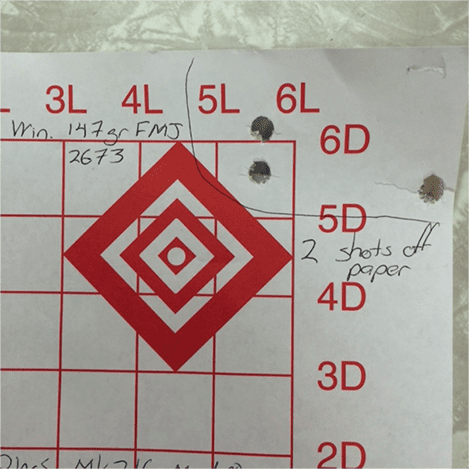
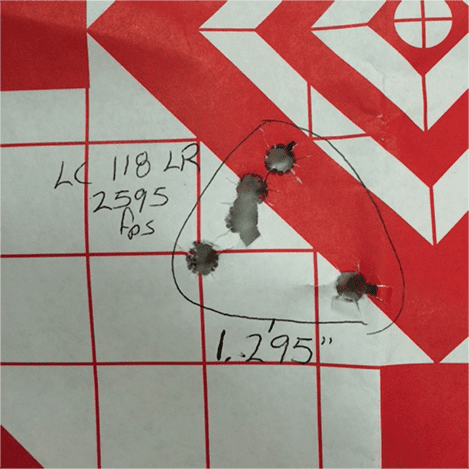
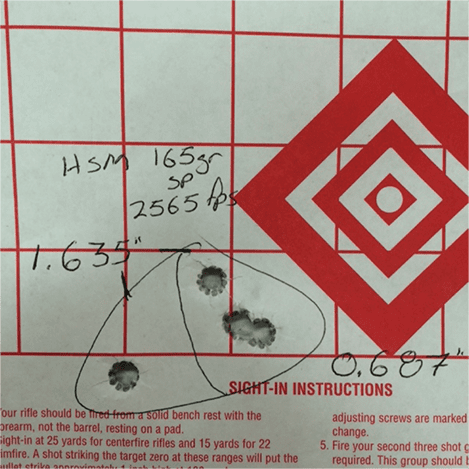

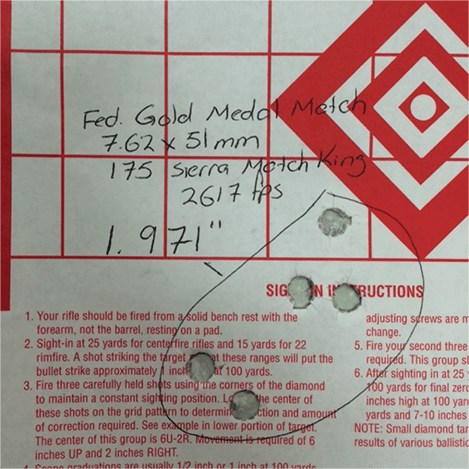
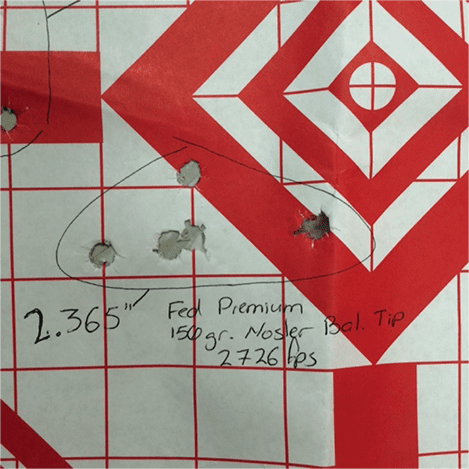
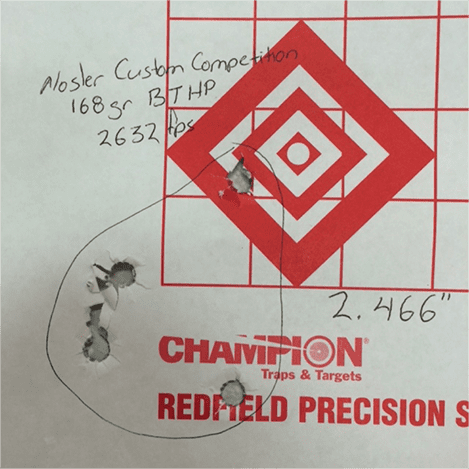
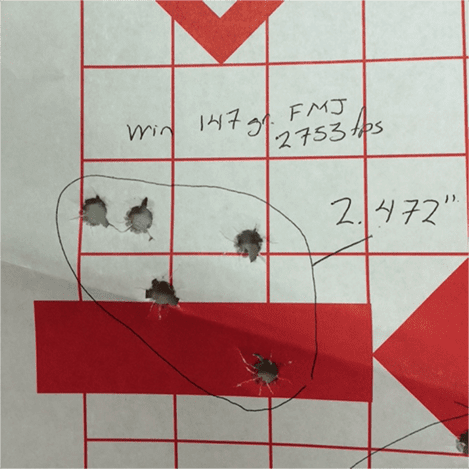
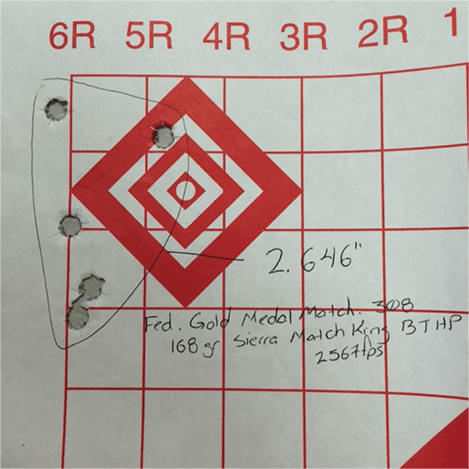
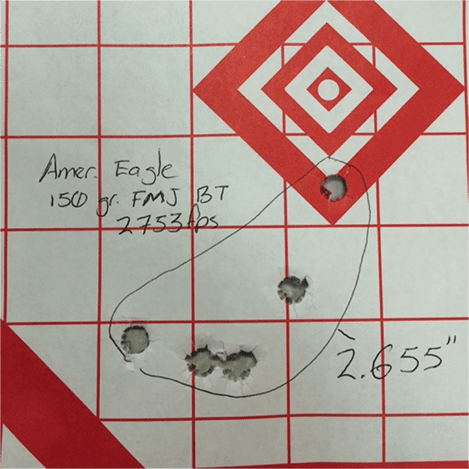



Nice writeup. Addition of images, particularly the differences in the bolts, was welcomed.
That was a pic of AK bolt vs PWS bcg, not Mod 0 vs Mod 1
Austin, that’s pretty good accuracy for a piston driven AR. I’m not surprised the 16″ was a straighter shooter. Shorter barrel are stiffer and less prone to vibration/barrel whip. Next time you plan to be in the Helena area, look me up and we can compare it with my 16″ .308 impingement system on my private range.
For $2600, they better shoot closer to a minute with match ammo. A DPMS LR308 will shoot a minute all day long for half the price.
I’ve had one of the first gen Mk216 for a few years now as a patrol rifle. Never had the money for a big ammo test like this, but 41.5gr of H4895 with a 175mk has given me consistent 5 shot groups in the .7 MOA range, loaded to magazine length. Sometimes down to .5 MOA.
Unfortunately, the issued duty ammo is Hornady 110gr vmax. Get about 2.5 MOA with that.
I’m a big fan of PWS, have one of their MK212 uppers on an sbr lower I put together. Tons of fun to shoot and not bad recoil for a 308. And I can hit clays set on a hill regularly with it at 100yds from a bench with a no magnification red dot
Well done comparo ! Thanks !
PWS rifles are rock solid and definitely the way to go for a piston AR setup. Having said that, I don’t like the proprietary nature of the platform as if the SHTF I don’t want to be left with a club if one of the special parts breaks.
That’s probably why I have a really nice PWS MK114 MOD 1 up for sale on Armslist at the moment at a great price. I will take the proceeds and buy a second Daniel Defense rifle.
Funny how nothing has seemed to trump my DDM4 for my ‘go-to rifle’ yet. The thing is a stud. Light, accurate, hasn’t so much as hiccuped…
I have an Arsenal SAM7R, the one that drinks vodka, for my main defense weapon, but I have been eying a PWS to include into my assortment. My Navy stud-muffin diver nephew bought one from Sharp Shooters here in Spokane which initiated my inquisitiveness of PWS. Now it’s simply what caliber and length.
I was strongly leaning towards a .300 BLK and doing the short barrel and suppressor arrangement, but one of the reviews, including the one here at TTAG wasn’t earth-shaking. Money was another pausing point. Acquisition costs are rather steep when you include transfer tax cost for a SBR and another for the can, then the can and rifle itself, is rather significant unless a person has virtually unlimited disposable income, is a purchase that needs some justification.
Man, I had such hope for the Sig MCX in 300 BLK (9” SBR)… but once again, Sig jumped the gun. I’m just not sure now that 300 has enough umphh to push a piston reliably. Hell even LWRC went DI on their 300. That should have told me something. Oh well, maybe some day. I too was eyeing up the MK109, but didn’t bite yet either. Maybe one day. I’m not going to be an early adopter this time in this space though. been there, done that.
I actually own an MCX and have had fantastic luck with it, shooting both sub and super sonic loads as well as suppressed. It has a pistol length gas system which I believe to be the kicker here. From my understanding of the .300 aac round, the pistol length gas system is most reliable as gas pressure is at its peak. Even lengthening the system to a carbine length sees a reduction in pressure and can therefore be less reliable, unless your shooting suppressed of course.
If you want a 300BLK SBR then do yourself a favor and get an AAC upper, get it registered as an SBR and build the lower, or buy a complete lower to slap it on.
Thanks. Very interesting. Good data. Love PWS and their long stroke piston. Interesting to see how it stacks up accuracy wise vs my M1A. Love all of the other intangibles of an AR platform over the legacy M1A platform. Right now I have my eye on the SCAR, REPR, or maybe the MDR as my next .308 however, but that is always subject to change haha
I’m guessing you probably did this, but…you mention using the same scope for each rifle, did you use the same shooter?
PWS is located in Boise, Idaho. The range they often used is located in Parma, Idaho, 40 miles west of Boise. I confirmed the Boise address yesterday with the PWS employees who were test firing rifles next to me at the Parma range.
The guns look so cool!
The problem with “accuracy testing” is that we have no idea how proficient the shooter is. I’m an inexperienced long range shooter. I have fewer than 100 rds through my PWS MK220 (Mod1) and 3 days ago I put 6 shots into 1.5″ @ 100 yds shooting cheap surplus Lake City M80 149gr ball ammo I picked up from PSA for 50 cents a round. I appreciate the review but I think the author needs some practice. Here’s a pic:
[URL=http://s1379.photobucket.com/user/ndkris/media/Mobile%20Uploads/B4F1673E-0B35-4FF0-93B3-F27BB5BF3BCE_zpsquuqsg5t.jpg.html][IMG]http://i1379.photobucket.com/albums/ah134/ndkris/Mobile%20Uploads/B4F1673E-0B35-4FF0-93B3-F27BB5BF3BCE_zpsquuqsg5t.jpg[/IMG][/URL]
I agree with Kris (2 Sep 15, above); the target pics presented in this ad hoc range test / “ammo analysis” serves best as an expose on mediocre marksmanship. Based upon a few undetermined variables for this test, it’s impossible to assess either the accuracy of the PWS rifles (already well-proven) or the reliability of the ammunition listed. Shot placement on these 100-yd target segments seems inexplicably off; which might draw the reader’s attention to the fact that the author and his buddy used a single scope on both weapons – yet there is no mention that either weapon was zeroed prior to firing their test groups. I’d expect folks to at least zero their weapons Before pretending to test weapon accuracy & ammo reliability. They used a 6.5 x 22 scope – on a 100 yd target – and yet the shot groups are inferior to standard 200m test groups. Those factors, including the thrown rounds (4-rnd groups used, omitting the obviously-thrown 5th round) are better evidence of poor shooting mechanics than of relative performance of excellent PWS weapons or quality ammunition. Just my two cents…
Absolute garbage rods, purchased an MK216 1M in November, it would not cycle. Sent it back to Idaho and they sent a brand new upper that had the same problem. Call them again and find out they had some problem with their machining calibration and the barrel extensions were all messed up on the 308s. Send the rifle back to Idaho a SECOND time. They try to send it back without test firing with the specific ammo that I had already purchased 1000 rounds of and I had to tell them I didn’t want it back until it was guaranteed to work(pretty obvious right?). I finally get it back last month and take it out to test fire, it cycles 138/139 tula steel case 150g with one ftfeed malfunction. Now that I am somewhat confident it is fixed I purchase a scope and bipod and other accessories. Get it all set up and realized that the stock is rotating. Take it apart and realized the threads on the tube have stripped out because their revolutionary castle nut ratchet system has come loose after only 138 rounds fired. No, it wasn’t staked because they say the ratchet system eliminates the need for it. So now have it with my local store whom I purchased it thru waiting on new buffer tube parts. I have held my tongue up to this point and resisted the urge to post negative reviews of this company, however it has now been SEVEN MONTHS and I still do not have a working rifle(much less a reliable one). At this point I will never ever trust this rifle to work when I need it and that renders it completely worthless to me. I did a lot of research before purchase and could not find a negative review of PWS. So here it is. DO NOT waste your time or your money like I did. My local store (Black Wing Shooting Center, Delaware OH) has promised to make it right and find a replacement rifle that is actually RELIABLE. I can’t speak to their 5.56 rifles as I have no experience with those but I can say that this will be my last purchase from this company and I will spread this story as far as I can on all of their platforms to prevent other people from wasting their time and money like I did. Worst purchase I have ever made in my life! I have photo evidence of all of the above but am not able to share it in this particular post.
If you love to wear polyester fabric jackets? so check Salt N Pepa Jacket which is a most selling outfit in our store, Shop now and get amazing discounts and offers.
Comments are closed.